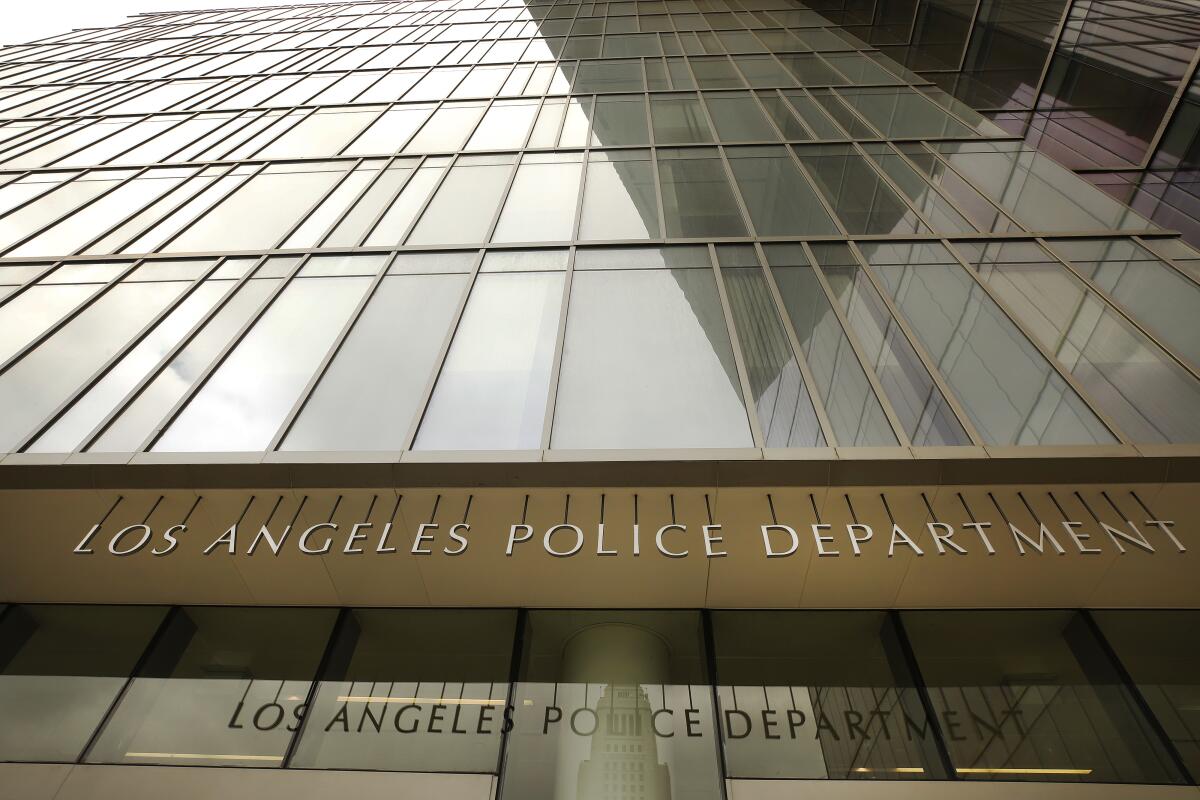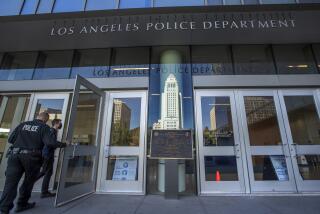Federal jury awards $23.8 million to mother of man shot by LAPD

The mother of a 32-year-old Navy veteran who was fatally shot by two Los Angeles police officers while holding a metal bar that was mistaken for a machete should receive $23.8 million in compensation, a federal jury concluded, delivering one of the largest payouts ever awarded in a case involving an LAPD shooting.
The jury decided unanimously on Friday that officers Fred Sigman and Christopher Montague used excessive and unreasonable force in shooting Jesse Murillo. The Los Angeles city attorney’s office will probably appeal the verdict, although no official decision has yet been made.
The officers shot Murillo multiple times as he ran after a police response to a 911 call of a family disturbance at a Canoga Park home on Dec. 23, 2017.
“I’m very pleased with the verdict and grateful to the jury for having the courage to announce in open court that the officers used excessive and unreasonable force and give a fair damage award showing the value of human life,” said Dale K. Galipo, a prominent civil rights attorney who has previously secured other multimillion-dollar verdicts in police shootings.
The jury’s verdict stands in contrast to a decision issued in 2020 by the Los Angeles district attorney’s office that found the shooting was legal, as well as a determination by the Police Commission that the use of deadly force was within LAPD policy.
Police went to Murillo’s Canoga Park home about 7:15 p.m. two days before Christmas in response to a report that he was involved in a physical altercation with his sister and had put her fiance in a headlock.
Sigman and Montague responded to the area after a colleague who was first on the scene reported, “Officer needs help. Man armed with a machete,” after seeing what he believed was Murillo with a machete and hammer, wearing a gas mask. Later evidence would show neither of those turned out to be correct — he was holding a 16.5-inch pull bar.
Sigman and Montague maintained that they shot Murillo because they believed he was running in their direction while holding a hammer in his right hand and what they believed to be a machete in his left hand, causing them to fear for their lives, according to the district attorney’s office review.
At the scene on Strathern Street, just west of De Soto Avenue, police found a hammer in Murillo’s pocket and the pull bar beside his body.
According to the lawyer who filed the case, Murillo tried to run away when he saw Sigman and Montague’s police cruiser in the street at the end of the alley, making a sharp left turn and running east on the sidewalk.
Galipo said Sigman and Montague fired seven shots at Murillo from the street without giving him adequate warning or time to comply. Four of those shots hit Murillo, according to Galipo, who said he presented evidence at trial that showed the trajectory of the shots indicated that Murillo was not running directly at the officers but away from them when he was hit.
At least one of the shots was fired as Murillo was going to the ground, Galipo showed jurors at the trial, using video of the incident and a trajectory analysis of the bullets. Some of the officers’ stray rounds hit a nearby garage, a truck and a fence.
According to the district attorney’s account of the deadly encounter, Murillo was about 50 feet from Sigman when he rushed toward him while holding the pull bar above his head. Sigman said he yelled, “Hey, stop!” and fired the first shot when Murillo got within about 22 feet.
Sigman fired five rounds from his 9-millimeter pistol and Montague fired two shots from his .45-caliber handgun. As they fired, Murillo ran “eastbound along the sidewalk adjacent to their police car before falling to the ground,” the district attorney’s office stated.
In concluding that the officers acted lawfully in shooting, a deputy district attorney in 2018 found that Murillo did run toward Sigman but then veered course — a slight change of direction in a rapidly evolving incident that still justified the shooting as self-defense, since it was reasonable to believe Murillo had a machete given the other officer’s radio call and because the pull bar would have caused severe injury.
Murillo was conscious and speaking after he was shot but later died from his wounds at the hospital.
In determining their verdict, jurors agreed with Galipo and co-counsel Maro Burunsuzyan’s argument that using deadly force was unnecessary, as the situation was not immediately life-threatening to the officers or anyone else.
The jury awarded $6.5 million in pre-death pain and suffering, $5.3 million for loss of life, and $12 million for wrongful death damages to Murillo’s mother, Tammy Murillo, according to the verdict form.
“We are grateful that the jury had the courage to stand up for the truth and do justice. Although the verdict will not bring Jesse back, we are confident that it will send a message and, perhaps, save other human lives,” Burunsuzyan said.
The Los Angeles Police Commission, however, determined in 2018 that the lethal use of force was within department policy, although the commissioners questioned the tactics of the officers and found the incident warranted a “tactical debrief.”
The commissioners noted that Montague said Murillo was “closing the distance rapidly and appeared to go wide” to “possibly going around the door to gain better access to his partner and use the weapon against him.”
In October 2021, Galipo won a $17-million verdict against the city in the civil rights case arising from the June 14, 2019, shooting at a Costco in Corona, where an off-duty LAPD officer killed a mentally disabled young man.
More to Read
Sign up for Essential California
The most important California stories and recommendations in your inbox every morning.
You may occasionally receive promotional content from the Los Angeles Times.











